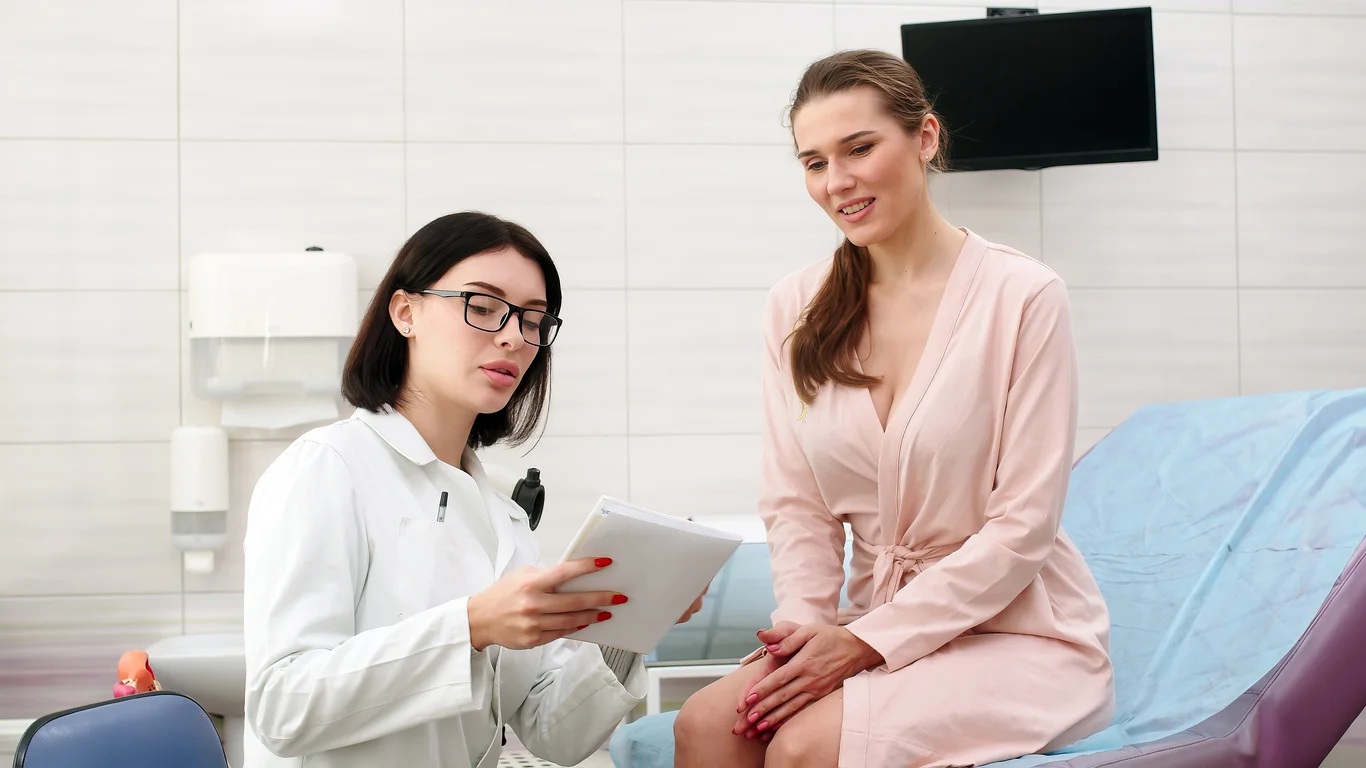It is estimated that half of all women between ages 50 and 79 have some degree of uterine prolapse or another form of pelvic organ prolapse. Uterine prolapse occurs when the pelvic muscle, tissue and ligaments weaken, allowing the uterus to drop down into the vaginal canal. Sometimes, the uterus can drop through the vaginal opening.
Factors that can increase your risk of uterine prolapse include:
- Vaginal delivery
- Menopause
- Obesity
- Smoking
- Chronic constipation
FAQ: Uterine Prolapse in Denver, CO
What is uterine prolapse?
A prolapse of uterus occurs when the uterus drops down into the vagina. Uterine prolapse and other forms of prolapse occur as a result of weakened pelvic floor muscles, tissues and ligaments, which serve to hold your organs in place. When pelvic floor muscles are weakened, they are no longer able to support the uterus, allowing it drop into the vagina. In severe cases of uterine prolapse, the uterus can protrude through the vaginal opening.
How can I tell if I have a prolapsed uterus?
Though many women have no symptoms, possible symptoms of a prolapsed uterus include:
- Bulging in the vagina
- Feeling pressure in the pelvis or vagina
- Lower back pain accompanied by bulging in the vagina
- Urine leakage
- Inability to completely empty bladder
- Feeling of heaviness/fullness in your pelvic region
- Constipation
- Aching or feeling of pressure in lower abdomen
How is uterine prolapse diagnosed?
Prolapse of the uterus is generally diagnosed during a pelvic exam. During your exam, you may be asked to bear down as if you are having a bowel movement because it can help us determine how far the uterus has lowered into the vagina. You may also be asked to tighten up your pelvic muscles as if you are stopping a stream of urine. This exercise during your pelvic exam allows us to check the strength of your pelvic muscles.
Depending on your symptoms, we may also need to examine your bladder and urethra by performing a cystoscopy (a procedure that inserts a hollow tube equipped with a lens into your urethra to view your bladder). A cystoscopy can also help us determine if you suffer from a prolapsed bladder. You may also need an MRI (magnetic resonance imaging) to inspect your other pelvic organs.
How is prolapse of uterus treated?
If you have few or no symptoms of uterine prolapse, we may first prescribe self-care measures, including:
- Kegel exercises to strengthen your pelvic muscles
- Losing weight
- Increasing the amount of fiber in your diet (to reduce constipation)
Other effective treatment options for uterine prolapse include:
- Biofeedback helps train patients to gain control over targeted muscle groups using various tools including inserting weighted vaginal cones or surface electromyography (sEMG), a device that measures the electrical activity of the pelvic floor and graphs the output so you can clearly see your progress.
- Vaginal pessary is a plastic or rubber ring inserted into your vagina which can help to support a bulging uterus.
- Surgery
If your prolapsed uterus is more severe, we may need to perform a minimally invasive surgery to help tighten your pelvic floor and reposition your uterus. In certain cases, we may recommend a hysterectomy (removal of your uterus).
Rest assured, we will carefully review every aspect of your condition during your exam to formulate a treatment plan that works for you.
Can I prevent prolapse of the uterus?
Certain lifestyle modifications can help to reduce your risk of developing uterine prolapse:
- Losing weight
- Eating a fiber-rich diet
- Quitting smoking
- Performing pelvic floor exercises
Will I find relief?
Yes! The most important thing to remember is that help is a phone call away! Take the first step by calling us for a consultation at 303.322.0500 today! You can also fill out our online form.







